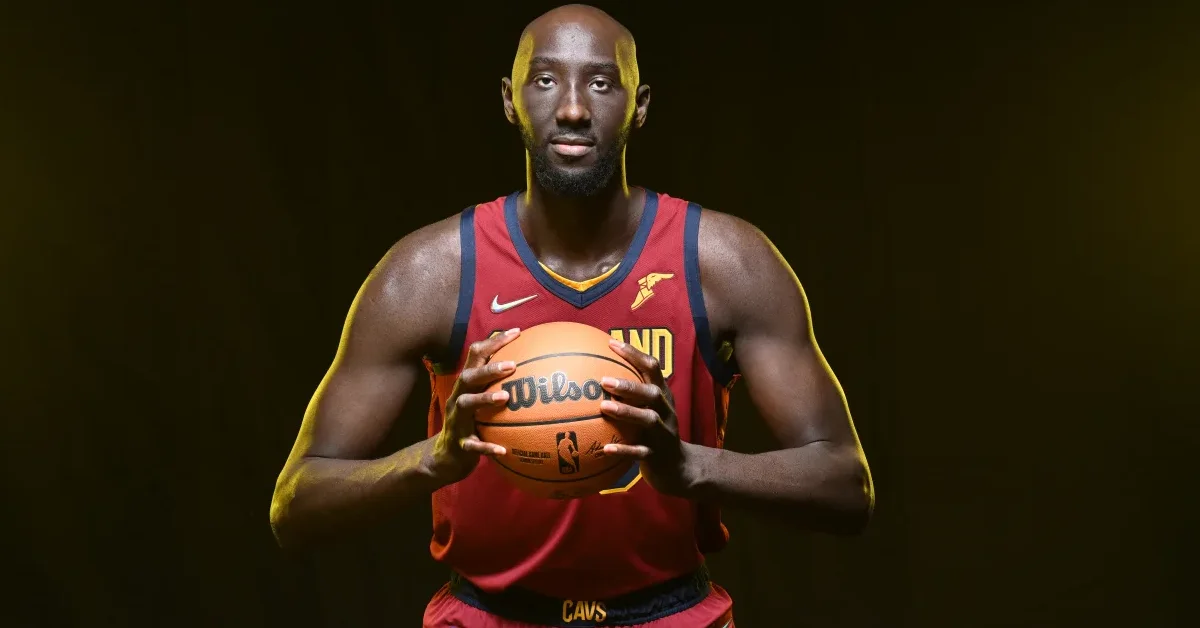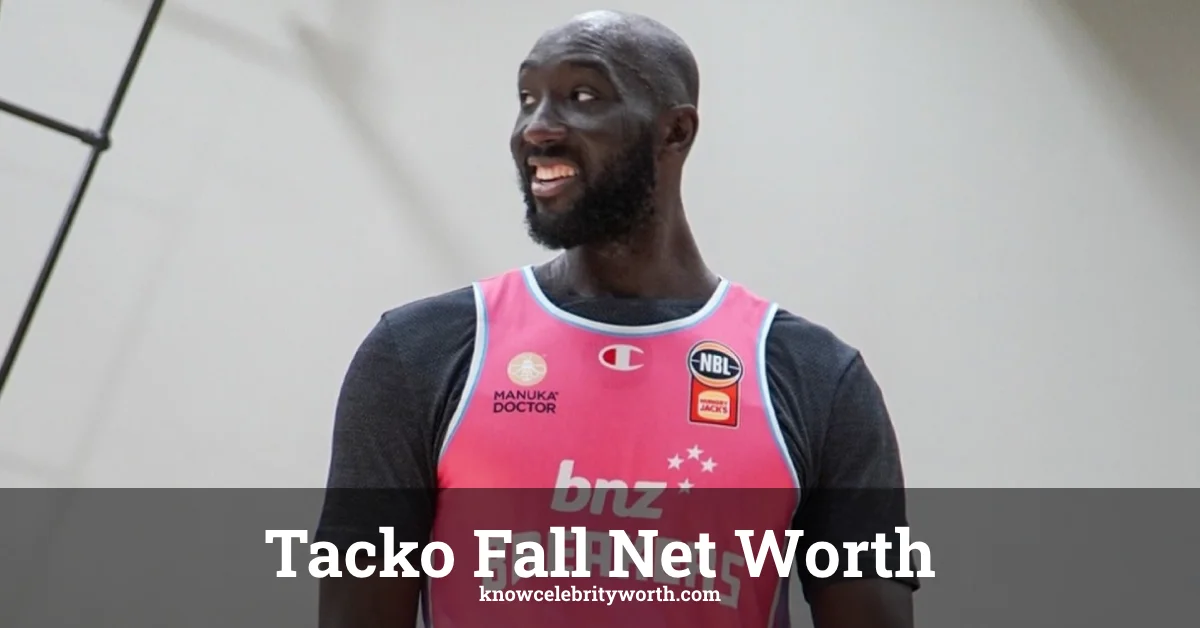When a 7-foot-6 basketball player walks into a room, people notice. But when that same player walks away from the NBA to find success overseas, that’s when money starts talking. Tacko Fall’s journey from Senegal to the NBA and beyond has been nothing short of remarkable – and so has his financial growth.
Tacko Fall’s Net Worth
Tacko Fall’s net worth sits at approximately $3 million in 2024. This figure represents the sum of his NBA earnings, Chinese Basketball Association (CBA) salary, endorsement deals, and personal investments.
What makes Fall’s financial story interesting isn’t just the numbers – it’s how he built this wealth despite going undrafted in 2019. While $3 million might seem modest compared to NBA superstars making $40+ million annually, it’s impressive for a player who spent most of his NBA career on two-way contracts.
Fall’s net worth has grown steadily since 2019, with his biggest financial jump coming after signing with the Xinjiang Flying Tigers in China’s CBA in 2022. This move proved smart for his bank account, as CBA teams often pay foreign players more than they might make on minimum NBA deals.
The NBA Years
Tacko Fall’s NBA journey began when the Boston Celtics signed him as an undrafted free agent in 2019. His contract history shows a player who maximized limited opportunities:
Fall signed his first two-way contract with the Celtics worth about $79,568 for the 2019-2020 season. The next season, Boston renewed his two-way deal for approximately $416,000.
In 2021, Fall joined the Cleveland Cavaliers on another two-way contract valued around $462,000. These two-way contracts let him split time between NBA teams and their G League affiliates.
In total, Fall earned roughly $957,000 during his three NBA seasons. This amount is substantially lower than many drafted players receive, as first-round picks often sign multi-million dollar guaranteed contracts.
What’s worth noting is how Fall turned limited playing time into financial opportunity. During his NBA stint, he averaged just 6.2 minutes per game across 37 total appearances. Despite this limited court time, Fall built valuable name recognition that would later help him secure overseas opportunities and endorsement deals.
NBA Salary and Other Income Sources
Tacko Fall’s financial portfolio extends well beyond his NBA paychecks. His move to China’s Xinjiang Flying Tigers in 2022 marked a turning point for his earnings.
The CBA typically pays foreign players between $1-3 million per season – often significantly more than minimum NBA contracts. While Fall’s exact CBA salary hasn’t been publicly disclosed, industry experts estimate he earns between $1-1.5 million annually in China, potentially doubling what he made during his entire NBA career in just one season.
Fall also secured several endorsement deals that boosted his net worth. His unique height and personality made him marketable despite limited playing time. Companies like Subway featured him in commercials, capitalizing on the obvious visual contrast between the 7’6″ center and regular-sized objects.
Though smaller than endorsements signed by NBA stars, these deals likely added several hundred thousand dollars to Fall’s income over the years. His social media presence, with over 1.8 million Instagram followers, provides additional leverage for sponsorship opportunities.
Financial Comparison
When comparing Fall’s financial journey to other undrafted NBA players, his story becomes even more impressive. Many undrafted players struggle to make NBA rosters, settling for minimum contracts or G League salaries ranging from $40,000-$125,000.
Fred VanVleet represents the ultimate undrafted success story, going from undrafted to signing a $85 million contract. While Fall hasn’t reached these heights, his earnings put him above many undrafted players who never secure long-term NBA deals.
What sets Fall apart financially from many undrafted peers is his global marketability. His extraordinary height and friendly personality created commercial appeal beyond basketball performance. This allowed him to build wealth without needing to be a starting NBA player.
Journey From Senegal to Global Basketball
Fall’s path to financial security began far from NBA arenas. Born in Senegal, he moved to the United States at age 16 to pursue basketball and education. This background adds context to his wealth-building story.
After playing college basketball at UCF (University of Central Florida), Fall went undrafted in 2019. Many players would have seen this as a setback, but Fall turned it into opportunity. His Summer League performances caught Boston’s attention, earning him a two-way contract.
Though his NBA minutes were limited, Fall became a fan favorite. Celtics crowds would erupt whenever he entered games, chanting “We want Tacko!” This popularity helped build his personal brand value beyond his statistical contributions.
When NBA opportunities dwindled after his Cavaliers stint, Fall made the pivotal decision to take his talents to China in 2022. This move significantly increased his income while allowing him to develop as a player with more court time.
Fall’s financial timeline shows a player who consistently made smart career moves:
- 2019: Undrafted, signs with Boston Celtics on two-way contract
- 2020: Re-signs with Celtics on improved two-way deal
- 2021: Signs two-way contract with Cleveland Cavaliers
- 2022: Moves to China’s CBA with Xinjiang Flying Tigers on significantly larger contract
- 2023-2024: Continues CBA career while building endorsement portfolio
Breaking Down Tacko Fall’s Net Worth
Understanding Fall’s $3 million net worth requires examining all his income streams and how they’ve contributed to his wealth:
1. NBA Earnings (2019-2022)
Fall’s three seasons in the NBA brought in approximately $957,000 from his contracts with Boston and Cleveland. While this amount wouldn’t make anyone wealthy long-term, it provided the foundation for his financial growth.
2. CBA Salary (2022-Present)
Fall’s CBA contract represents his largest income source, estimated at $1-1.5 million annually. Over two-plus seasons, this has added roughly $2.5-3 million to his earnings total.
3. Endorsement Deals
Though not as lucrative as NBA star endorsements, Fall’s commercial appearances and sponsorships have likely generated several hundred thousand dollars in additional income. His partnership with Subway was particularly visible during his Boston tenure.
4. Investments
Like many professional athletes, Fall has likely invested portions of his earnings. While specific investment details aren’t public, prudent financial management would account for some of his net worth growth.
5. Expenses and Tax Considerations
Professional athletes face significant expenses, including agent fees (typically 3-4% of contracts), training costs, housing in multiple locations, and high tax rates. These factors affect the net portion of Fall’s earnings that contribute to his wealth.
Why Tacko Fall’s Net Worth Matters in Sports?
Fall’s financial journey offers important lessons about sports economics and athlete wealth building:
First, his story demonstrates that NBA playing time doesn’t always directly correlate with earning potential. Fall parlayed just 37 NBA games into commercial opportunities that many players with more court time never receive.
Second, his willingness to pursue international opportunities proves how global basketball continues evolving as a viable financial path. More players now view leagues like the CBA not just as fallback options but as strategic career moves.
Third, Fall’s journey highlights how unique physical attributes can create commercial value beyond athletic performance. His extraordinary height made him recognizable even to casual basketball fans, creating marketing opportunities that transcended his statistical impact.
For undrafted players watching Fall’s career, his financial growth offers a blueprint for maximizing limited NBA opportunities. By building a personal brand, embracing fan support, and being open to global opportunities, players can build wealth despite going undrafted.
What Makes Tacko’s Story Unique!

What stands out about Fall’s financial journey is how he maximized limited opportunities. Many NBA players who average just 2.2 points per game throughout their careers struggle to build lasting wealth. Fall transformed brief playing stints into a multi-million dollar net worth through smart career decisions.
His willingness to look beyond the NBA proved especially important. While many players view overseas basketball as a step down, Fall embraced it as a path to increased playing time and higher earnings. This adaptability highlights how the global basketball economy now offers viable alternatives to NBA careers.
Fall’s story also represents financial success for international players. Coming from Senegal to the US as a teenager, his journey to financial security didn’t follow traditional paths. For young international players with NBA dreams, Tacko Fall demonstrates how adaptive career planning can lead to wealth even without draft-night recognition.
Common Questions
Many basketball fans wonder specific details about Fall’s finances. Here are answers to common questions:
Did Tacko Fall make more money in China than the NBA?
Yes. Fall likely earned more in his first CBA season than during his entire three-year NBA career.
What was Tacko Fall’s highest NBA salary?
His highest annual NBA salary came during his 2021-2022 season with the Cleveland Cavaliers at approximately $462,000.
Does Tacko Fall have major endorsement deals?
While not securing Nike or Adidas signature shoe deals, Fall has participated in commercials and endorsements, most notably with Subway during his Boston tenure.
How does Tacko Fall’s net worth compare to other players his height?
As one of the tallest NBA players ever, Fall’s financial comparisons are limited. However, his $3 million net worth falls below other extremely tall former players like Yao Ming ($120 million) but exceeds figures for many other brief NBA careers.
Financial Legacy
Beyond numbers, Fall’s financial journey represents resilience and adaptability. Many players would view going undrafted as career-ending disappointment. Fall saw it as merely the beginning of a global basketball journey.
His willingness to embrace fan attention – sometimes participating in playful moments like conducting the Boston Pops Orchestra in a Santa hat – helped build a personal brand that transcended his limited playing time. These moments created marketing opportunities that bolstered his financial portfolio.
For future basketball players, especially those who may go undrafted or receive limited NBA opportunities, Fall’s path demonstrates that financial success doesn’t require superstar status. Strategic career moves, global perspective, and personal brand development can build wealth despite career limitations.
What perhaps matters most about Fall’s financial story is how it represents international basketball’s evolution. No longer just an NBA fallback, global leagues now offer legitimate wealth-building opportunities for players willing to broaden their horizons beyond North America.
As basketball fans follow Fall’s continuing career, his financial growth serves as powerful reminder that sometimes the most successful money moves happen far from the spotlight of NBA arenas.
